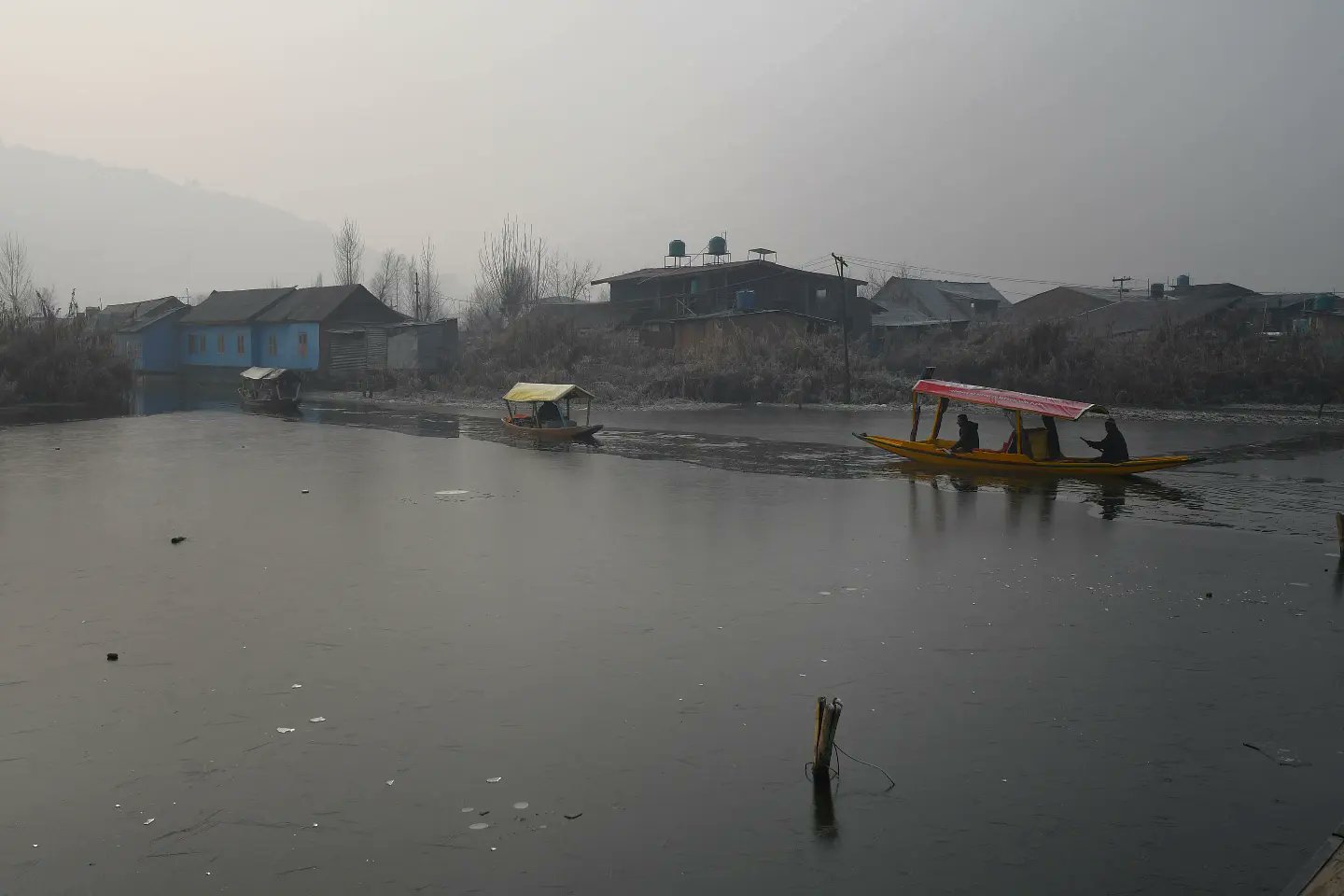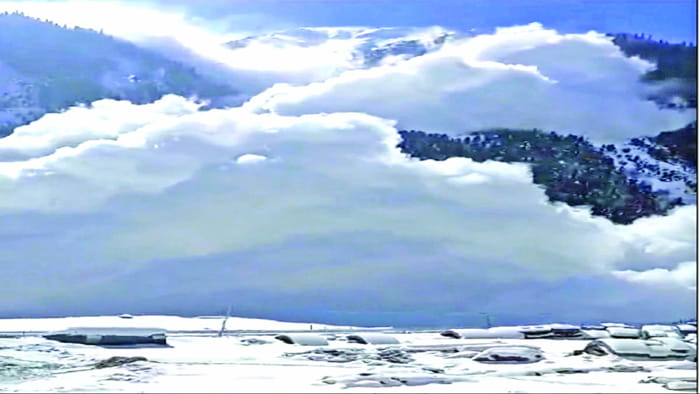
Intense cold conditions prevail in Kashmir
STATE TIMES NEWS
Srinagar: Several parts of Jammu and Kashmir, including Srinagar city, witnessed the warmest January in 43 years, the Meteorological Centre Srinagar’s data said.
In terms of snowfall or rains, Srinagar city witnessed the second driest January in the past four decades, recording a mere 3.0 mm of precipitation in the month this year, it said.
The lowest precipitation in the summer capital of Jammu and Kashmir was recorded in January 2018 when only 1.2 mm of rainfall or snow took place.
According to data, the mean Tmax (maximum temperature) recorded in January over Srinagar station was 11.9 degrees Celsius while for Gulmarg in north Kashmir and Banihal in Ramban district, it was 5.7 degrees Celsius and 16.9 degrees Celsius respectively.
Jammu city recorded the lowest mean maximum temperature for the first month of the year in over four decades, it said.

Avalanche hits Sonamarg
Srinagar: A massive avalanche struck the Sonamarg area on Srinagar-Leh Highway on Thursday, officials said. No loss of life has been reported so far, they said. The officials said the avalanche occurred near the workshop for Zojila tunnel construction in Sonamarg. However, there was no damage reported in the incident.
The authorities have issued an avalanche warning for the higher-reaches of Kashmir valley following heavy snowfall in the first week of February. People have been advised to avoid venturing towards the avalanche-prone zones for the next 24 hours.
This is the highest mean maximum temperature for the month of January for these stations in the past 43 years, the MeT centre said in a post on X.
“2024 January was one of the driest and warmest January in the last 43 years for most of the stations of J-K except the stations of plains of Jammu (Jammu, Samba and Kathua),” it added.
It said Jammu station, on the other hand, observed a mean maximum temperature of 13.4 degrees Celsius in January, which is the lowest since 1983.
The mean minimum temperature for January observed over Srinagar, Jammu, Gulmarg and Banihal were minus 3.2 degrees Celsius, 5.5 degrees Celsius, minus 3.9 degrees Celsius and 0.1 degrees Celsius respectively.
“The 2024 mean Tmin is one of the highest for Gulmarg in the last 43 years,” the MET centre said.
Meanwhile, Kashmir remained in the grip of a cold wave as the minimum temperature plunged several degrees below freezing point at most places in the valley on Thursday, officials said here.
The minimum in Gulmarg skiing resort in north Kashmir fell to minus 12 degrees Celsius from previous night’s minus 10 degrees Celsius. Gulmarg was the coldest recorded place in the valley on Wednesday night.
Pahalgam tourist resort in south Kashmir, which serves as the base camp for the annual Amarnath yatra, recorded a low of minus 11.9 degrees Celsius.
Kokernag and Qazigund towns in south Kashmir recorded a low of minus 4.5 degrees Celsius and minus 6.4 degrees Celsius respectively, the officials said.
Srinagar, the summer capital of Jammu and Kashmir, recorded a low of minus 5.2 degrees Celsius compared to previous night’s minus 2 degrees Celsius.
The minimum temperatures in Pahalgam, Gulmarg, Qazigund and Srinagar were around five degrees below normal for this time of the year.
Although ‘Chilla-i-Kalan’ — the 40-day harshest winter period — ended earlier this week, the cold wave has continued in Kashmir.
The valley is currently going through a 20-day-long ‘Chilla-i-Khurd’ (small cold) which shall be followed by a 10-day ‘Chilla-i-Bachha’ (baby cold).

